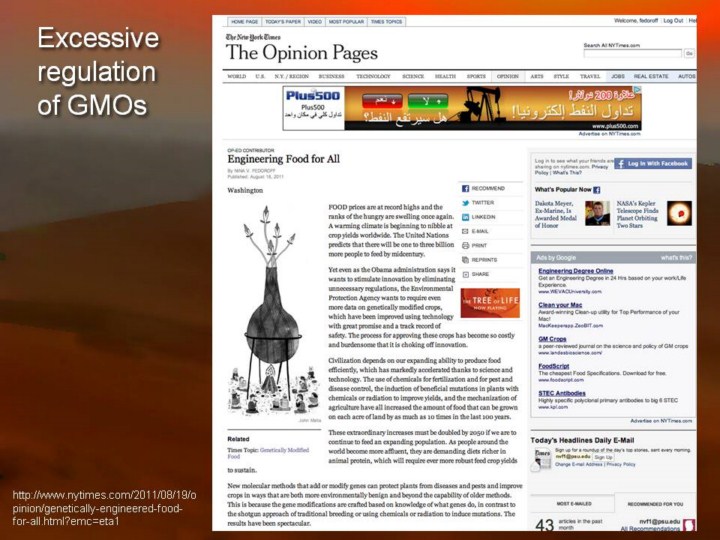 |
But
the rather widespread public rejection, fueled by advocacy organizations
like Greenpeace, has had a huge effect, promoting the development of ever
more complex regulatory requirements. I published an Op-Ed piece in the New
York Times last summer protesting the US Environmental Protection Agency’s
expansion of its regulatory requirements without scientific justification. I
enlisted more than 65 members of the US National Academy of Sciences,
including Nobel Prize laureate Jim Watson, to sign a letter of protest to
the EPA. We are continuing to work with EPA and to make Congress aware of
the excessive regulatory burden on GM technology. Why?
|
